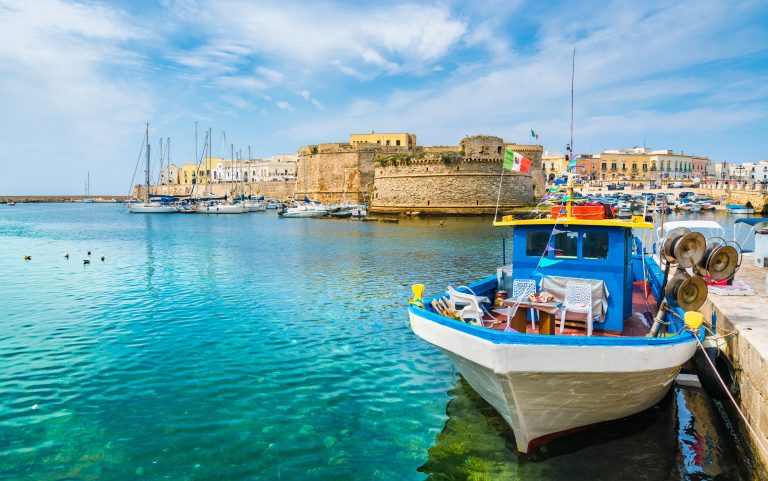We’ll recount our thrilling visit to the Ferretti Group in Forlì, where we were guided through all the shipyard’s production processes.
We often see yachts at boat shows, on docks, or sailing, but how much technology and expertise are behind them? Where and how are these yachts, which have built the reputation of the Italian shipbuilding industry, constructed?
The visit
Undoubtedly, many times you’ve wished to visit a shipyard to understand yacht construction. We had the privilege of visiting one of Italy’s most renowned shipyards, Cantieri Ferretti in Forlì, which has contributed to the fame of Italian design over the years.
Our exceptional guide, Ing. Anna Galasso, Plugs Moulds & Composites Manufacturing Director, enthusiastically shared part of her daily commitment with us, offering insights into the yard’s philosophy and organization.
Witnessing the fundamental stages of yacht construction, we realized the complexity of the process and the expertise required from the original design to achieve a flawless final product.
Forlì
The Forlì plant, which also serves as the Group’s Headquarters, spans 52,000 sq.m and is dedicated to the production of Ferretti Yachts (500, 580, 670, and 720), Itama 62RS, and Wally brand boats. It houses a comprehensive system for high-quality Plug & Mold production, a test tank, paint sheds, and facilities for Wallytender and Wallypower.
A visit to one of the nation’s most renowned shipyards offers valuable insights into yacht construction, providing essential knowledge about the structure and business model of a shipyard. Each facility possesses unique characteristics. The new-build market is thriving, with Italian yacht and superyacht yards’ order books extending for the next three years.
The Ferretti Group’s growth continues: recent investments have bolstered production capacity, resulting in a total floor space of approximately 290,000 sq.m across various locations, marking a 14.5% increase from 2021.




Plug & Moulds
Our visit primarily focused on the Plugs & Moulds department, recognizing its crucial role in boat construction, as without moulds, the process cannot proceed. This technical area, often overlooked, plays a vital role, as we discovered. While various tools are integral to boat production, perhaps none are as critical as the mould, which directly influences the quality of the produced part, especially its surface preparation, a crucial final step. Therefore, achieving perfection in both the countermould and mould is imperative for future production.
The Forlì plant is responsible for manufacturing FRP moulds and components for all brands and plants within the group, as well as coordinating homologation and testing activities across all facilities. Spanning an area of 5000 sq.m. and employing approximately 150 individuals, this department plays a pivotal role in the production process.
The construction of a composite boat begins with the mould, which significantly influences the boat’s construction, appearance, and future performance. While mould-making is an industrial process dating back to the 1950s, today’s hull and deck moulds are primarily crafted from GFRP (fibreglass), offering durability and suitability for mass production environments when appropriately treated.
The function of the counter-mould
The counter-mould serves as the positive shape of the mould for lamination. Although composite moulds and counter-moulds have a shorter service life and pose challenges such as micro-cracks and porosity compared to metal tools, they offer several advantages. These include being lightweight, cost-effective, with lower thermal inertia and easier manufacturing. They potentially reduce manufacturing time, offer ease of repair and maintenance, lower CTE misalignments, customizable thermal and structural properties, and reduced health and safety risks.
Once cured, the outer shell is removed to reveal the shape of the female mould. Typically, the counter-mould is used only once and then discarded, as the female mould becomes the source for future parts. To create the glass fibre component, the mould undergoes layers of release wax, gel coat for color, and glass fibre laminates according to design parameters. After hardening, the part is removed from the mould, ready for further processing.
Well-built fibreglass moulds can last for many years with occasional repairs and polishing, offering an economy of scale. This flexibility contributes to fibreglass boats being adaptable to various budgets and lifestyles.
Continuous innovation
At the Forlì plant, the Plug and Molds department plays a crucial role in producing moulds for FRP components (all brands, all plants), while the composites department manufactures the main FRP components for Ferretti’s Forlì and Cattolica plants. The Ferretti Lab oversees and coordinates all approvals and testing activities for new materials and processes for the group’s FRP components, including eco-friendly materials for GRP composites (natural fabrics, eco-resins, eco-cores, etc.).
Since 2016, the Composites Department has been utilizing the infusion process for boat production, which has become well-established, enabling the production of large FRP components. This method reduces production time and further enhances quality. In 2019, the first painting trials of the hulls commenced, and a splendid painting room was inaugurated in 2022.
Outlook
The Ferretti Group demonstrates a steadfast commitment to sustainability, a cornerstone for future constructions, with the goal of producing boats with lower carbon emissions. This commitment extends to materials, energy efficiency, and greenhouse gas emissions at both product and process levels.
Since 2020, Ferretti has implemented solar-assisted trigeneration in its shipyards, reducing fuel and energy costs by approximately 20-25%. This technology, initially utilized in the Ancona plant, has now been integrated into the Forlì plant, including the new Wally facilities.
Sustainability encompasses not only the yacht itself but also the processes required for its production. The company actively explores new technologies to lighten hulls, streamline shipyard operations, and develop hybrid engines. Currently, natural fibers like linen, eco-resins, and eco-core materials are being evaluated and tested.
Significant attention is directed towards 3D printing, particularly its potential to directly produce final GRP components, thereby eliminating the need for moulds and expediting production.








